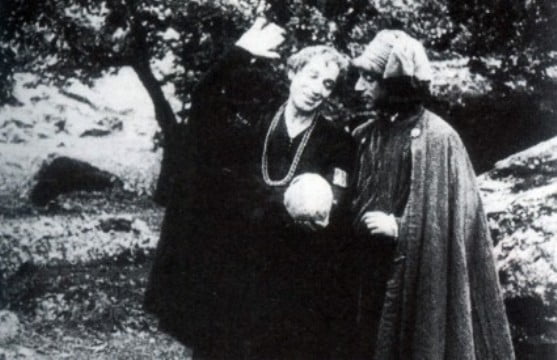
Next month, on 23 June, I am introducing the film Amleto at the Bristol Watershed. It’s an Italian film, made in 1917, and yes it’s the story of Hamlet. Among all the celebrations of quatercentenarian William Shakespeare, and among almost every book written on Shakespeare and film, you will find no mention of this gem, probably the best silent Shakespeare feature film we have, and among the best of all Shakespeare films, silent or sound. The reason for its neglect is the film’s rarity, with the surviving 35mm copy showing some signs of nitrate damage in places. But that should be no reason for not seizing the opportunity to see a film that understood how Shakespeare worked with the camera. It may be a silent film, but the necessary words are there in the intertitles. It is Shakespeare artfully shaped to the medium at hand.
To mark this screening, I’m reproducing a cut-down version of a talk I gave at the University of Notre Dame, South Bend, Indiana, back in 2004, before a screening of Amleto. It serves as an introduction to the film, and to the engrossing world of silent Shakespeare. Do read on…
Of all the products of the first thirty years of cinema, when films were silent, perhaps none were so peculiar, so intriguing, and in their way so revealing of the temper of the medium in its formative years, as silent Shakespeare films. Shakespeare in the cinema is enough of a challenge for some people; what about Shakespeare on film when you can’t hear any of the words?
The film you are to see this evening is one of two hundred or more Shakespeare films that were made in the silent period of cinema. You are seeing it because it has survived (when so many films from this time have not), because it is a rarity scarcely known even by those who are expert in this area, and because it is a good and interesting film. Not a great film, but arguably the best silent Shakespeare film that exists. It is certainly a film that needs to be much better known.
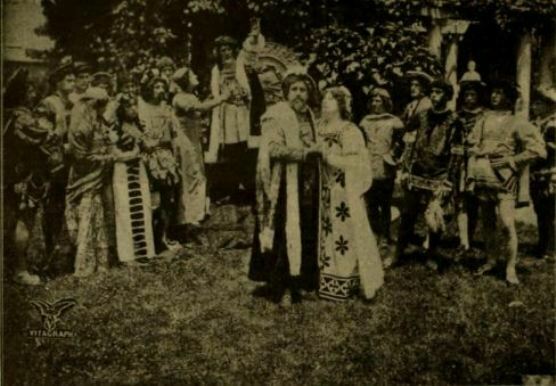
Silent Shakespeare
I said that more than two hundred silent Shakespeare films were made, and that is true, but few of these were feature-length, that is, an hour or more, such as this evening’s attraction. Most were made before the First World War, when films were one reel in length; that is, lasting ten to fifteen minutes, and you saw a number of films of this length in a single programme. Why were these nickelodeon Shakespeares made?
First of all, such films arose because the cinema had need of them. In the early 1900s, films were increasingly starting to demand shows and exhibition halls of their own. Film programmes became gradually established at about one hour long, with a mixture of story and actuality films each one reel long. As the film-going habit became established, so special theatres came to be constructed for film exhibition, and as cinemas spread so more producers entered the market, eager for fresh source material and looking for literary and dramatic properties. These would preferably be out of copyright, following a significant court case won in 1907 by the author of the book Ben Hur against a film company who had filmed the story without permission. A dead playwright would not be claiming royalties.
With the growth of such cinemas, from around 1907 onwards, there came a film industry sensitivity towards its lowly reputation. It had a working class audience at its bedrock, but film producers and cinema owners sought to elevate their product, as a matter of pride, as a means of placating censorious authorities, and with the hope of attracting a moneyed, middle-class audience. In short, richer audiences would pay more for their tickets, but they had be reassured that they were getting their money’s worth. A major strategy adopted was the imitation of the theatre. Cinemas copied theatre furnishings, film producers signed up stage stars, and stage plays were turned into films. Hence, for a combination of some if not all of these reasons, from 1908 there was a sudden and remarkable rush of Shakespearean films, each acclaimed on its appearance as being proof of the growing status of the cinema, the stamp of social acceptability. Putting it in simple figures, in 1905 three Shakespearean films were made, in 1906 three, in 1907 two, in 1908 fifteen, in 1909 eight, in 1910 fourteen.
Some film companies began to specialise in these one-reel Shakespeares. For example, in America, the Vitagraph company – one of the most commercially successful companies of the period – filmed As You Like It, Henry VIII (under the title Cardinal Wolsey), Julius Caesar, King Lear, The Merchant of Venice, A Midsummer Night’s Dream, Othello, Richard III, Romeo and Juliet and Twelfth Night – all of these between 1908 and 1912. The plays were similarly filmed at this period by companies in Britain, Italy, Denmark and France.
Although imitation of the theatre was important to the new medium, such films were not read solely as substitute theatrical experiences. Many film companies of this pre-First World War period produced historical and costume dramas, and the Shakespeare films could be read simply as being within these genres, where the manners, dress and general action would all be generally comprehensible for audiences.
One-reel Shakespeare was, inevitably, a crude simplification of the plays’ depths and subtleties. The idea was to cram as much as possible of the plot into that fifteen minutes, boiling down the action to each of the key, familiar scenes that would get over the story and serve as a recognisable record of the play. Viewed from the traditional Shakespearean perspective, this sort of signposting reduced the plays to a parade of stabbings, silent speeches, rapid exits and entrances that largely abandons dramatic logic, and provides precious little in the way of poetry, or feeling for metaphor and imagery.
The idea of Shakespeare, rather than the actuality, was the guiding force behind the production of these films. The producers wanted to make them and to be seen to have made them. The audience may or may not have appreciated their intended Shakespearean qualities, but there was always the spectacle or the costumes or the actors, and the certainty of another film coming along in 15 minutes.

Feature-length Shakespeare
In the early 1910s a change came over the cinema, with the arrival of the feature film. Cinema shows changed from being a collection of short films of roughly equal length to a main feature of an hour or more’s length, with supporting programme, and with this change came a marked drop in the number of Shakespearean films produced. While companies were producing hundreds of short films, plundering literary and dramatic properties all the while, then there was almost bound to be a number of Shakespearean films. With the arrival of the feature film, and hence the opportunity to film the whole of one of the plays with reasonable fidelity, the financial risk became all the greater, and part of the battle to raise the status of the cinema was in any case already won – the middle classes were beginning to come to see films in increasing numbers. Any film of a Shakespeare play from now on was a special commitment and something out of the ordinary.
The film we have this evening comes from 1917. Prior to its release, there were seven feature-length Shakespeare films made, four of them in 1916, which was the tercentenary of Shakespeare’s death. Two of these feature-length films commemorated a specific stage production; the Hamlet of Sir Johnston Forbes-Robertson in 1913, and The Merchant of Venice with Matheson Lang in 1916. Both were British productions. However, despite the greater length of film seeming to offer the opportunity to record a performance almost in full, both films adopt some kind of cinematic sensibility. The 1913 Hamlet is full of people mouthing silent speeches, to what must have been the bewilderment of audiences at the time, but its performances – particularly that of Forbes-Robertson in the central role – are attuned to the close gaze of the camera. It is a Hamlet told as much by the eyes as by physical gesture. The 1916 Merchant of Venice is a lesser work, filmed mostly on the stage, but with a surprising use of camera movement to impart dynamism and visual depth.
The other feature-length films, including two versions of Romeo and Juliet (one starring Theda Bara, the original screen vamp), a King Lear from the Thanhouser company, a Macbeth produced by D.W. Griffith, and Richard III starring Frederick Warde, were made in America, and were, for the most part, attempts to demonstrate that Shakespeare’s plays could act as scenarios, that the film, with the opportunities that it offered for action to be expanded through naturalistic settings and the use of exteriors, could absorb Shakespeare within its particular framework. In general there were two options on offer – record, or adapt the text to cinematic purpose. It is the abiding strength of the Hamlet of 1917 that it does both, presenting an idealised performance of the play, through a thoroughly realised cinema eye.
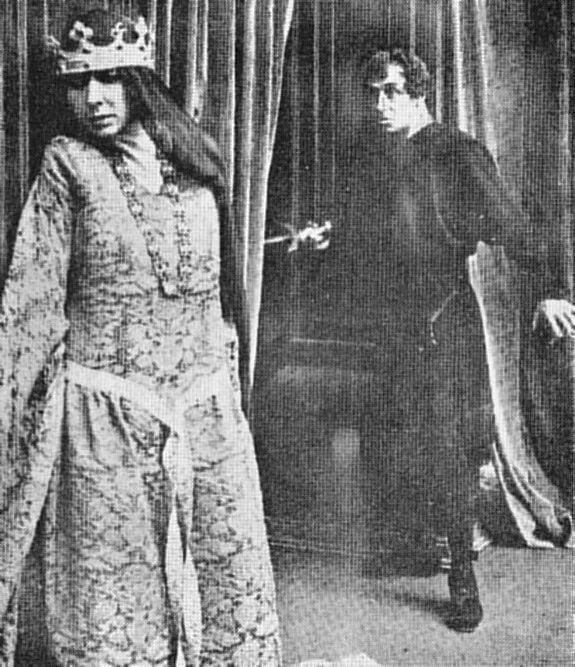
Amleto
Amleto, therefore, was part of an already well-established tradition of filmed Shakespeare – though it was also very much a film out on its own. It was made in 1917 at studios in Turin, Italy. The director was Eleuterio Rodolfi, an experienced film director with the Ambrosio company. Its star was Ruggero Ruggeri, a stage actor celebrated in his native Italy, who had recently triumphed in a stage production of Hamlet, and whose third film this was. The remainder of the cast all had film experience. The Polish-born Elena Markowska played Ophelia. Mercedes Brignone, who is particularly good in the film, played Gertude. Armand Pouget was the Ghost of Hamlet’s father, Gerardo Pena played Laertes, and an actor whom we have only as Martelli played Claudius. The film was released in Italy, France and Britain, and we may assume was exhibited in other countries across Europe (while always remembering that there was a war on). It was also released in America, though it seems to have made minimal impact.
Amleto was made at a time when Italian cinema was in decline. The Italian film industry before the war had amazed the world with spectacular historical epics such as Quo Vadis, Dante’s Inferno and Cabiria. These stupendous productions were immensely long, and had casts of thousands, wild beasts and gigantic sets which were invariably destroyed by invading armies, volcanoes or sometimes both in the final reel. They included some very loose adaptations of Shakespeare, such as Antony and Cleopatra in 1913 and Cajus Julius Caesar in 1914. But the taste for such epics waned, and the money to sustain them disappeared once the war had its inevitable impact on the Italian film industry. Amleto, a film made in 1917, was therefore made under economic circumstances very different to the pre-war period when Italian epics conquered the world cinema market. It is an altogether more modest production; though not an impoverished one as such.
Why the film was made when it was can only be left to speculation, though the most obvious reason was a desire to capitalise on the recent success of Ruggeri’s stage production. There are few details available of that 1915 stage production, though we may assume that it inspired the film’s setting in more of a Renaissance court than the heavily Viking-themed stagings of Hamlet that were common a generation before. In this, Ruggeri was probably inspired by the British production of the play by Sir Johnston Forbes-Robertson. This production, as I said earlier, had been filmed in 1913, and it seems very likely that it influenced first Ruggeri’s stage production and then his film, as they share not only a general mise en scene but some individual pieces of action that are clearly interrelated. Most significant among these is Hamlet’s death, where he is borne onto the throne and given a crown and sceptre. Forbes-Robertson included this piece of invention in his stage production and film; Ruggeri borrows it and improves upon it, giving Hamlet’s death something of the imagery of the crucifixion about it.
The inspiration behind the film was therefore both Ruggeri’s own stage production, and the film made four years earlier of Sir Johnston Forbes-Robertson’s production. Ruggeri, I think, set out to make the film an improvement on the earlier film, an exercise in how to reimagine Hamlet for the camera.
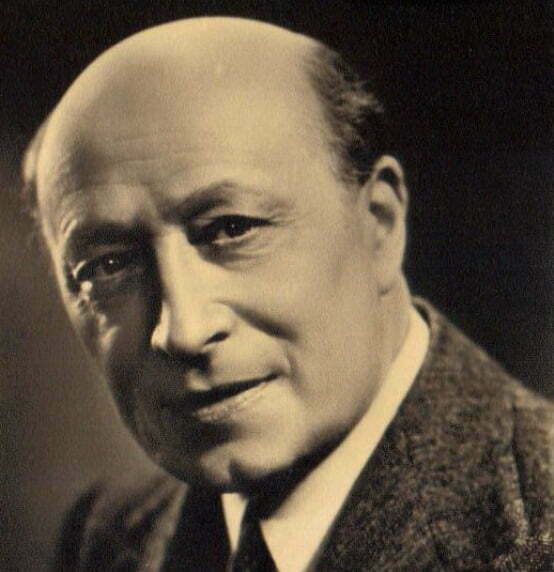
Ruggero Ruggeri
Though little-known now, Ruggero Ruggeri was one of the leading figures of the Italian theatre in the twentieth century. He was born in Fano, Italy in 1871. He made his stage debut in 1888, and emerged as a leading actor in 1894 playing Iago in Othello. He made his reputation with lead performances in the plays of D’Annunzio, and established a theatre company in his name. In 1914 he starred in the Compagnia Ruggero Ruggeri’s production of Hamlet, a performance which gained particular acclaim from Italian critics. He would tour London, Paris and then South America with a later production of the play in the 1920s. However, it was in 1918 that he became associated with the modernist playwright with whom he established his greatest reputation, Luigi Pirandello. Ruggeri starred in a number of the Italian playwright’s major works, and Pirandello was inspired by Ruggeri’s brooding and powerful stage presence to write specific roles for him, most notably the title role in Henry IV.
Ruggeri continued acting on stage until 1952, when he was 81. He toured Europe, Mexico and South America, though never North America. He made twenty or so films between 1914 and 1953, ending his career as the voice of God in the Don Camillo films, which gives some indication of the commanding nature of his voice as well as his presence on stage.
Commentators of the period agreed that Ruggeri was particularly strong in depicting, powerful, tormented men teetering on the edge of madness. Critics described as uncanny his ability to show someone in the grip of turbulent inner passions, being particularly effective in how he combined restraint in physical presence with mobile facial expressions. Composure and anguish thereby existed in the same figure, struggling to master overwhelming feelings.
Historical commentators also position Ruggeri as being interestingly representative of both the traditionalist and the modern stage. He was an actor of the old school, a dominating star presence who wanted productions built around him, but equally he was someone open to new ideas, especially to Pirandello’s radical ideas on stagecraft.
In Ruggeri’s performance in Amleto we certainly see this combination of the classical and the modern. Not least do we see this in the simple fact that it is a film, that the traditionalist theatrical performer has accepted the camera, working with the medium and not in spite of it. Of his reputation as an actor effective in portraying facets of madness, we would expect a particularly tormented Hamlet. Indeed, Ruggeri emphasises Hamlet’s putting on of madness, and he is good at denoting changes of mood through dynamic facial expressions. It is, overall, a memorably expressive Hamlet, though to our tastes now one that is a little overplayed in places. He is also too old to convince us as being a young prince – he was forty-six, looks it, and indeed looks older than his mother. But the emotions portrayed are genuine, not merely melodramatic poses. If Ruggeri is not able to offer us the sensitivity in performance that Johnston Forbes-Robertson was able to do, his is a Hamlet whose inner crisis we are made to feel. And if Ruggeri was the star actor around whom a production had to be built, then this translates into his interpretation of Hamlet – an arch performer, caught up in a sea of troubles, but rather pleased with himself at how he directs the situation, even to the extent of choreographing his own death.

Cinematic Shakespeare
Amleto is no mere stage play performed before the cameras. What most distinguishes it is its consistent cinematic sense. In contrast to the 1913 Hamlet, which is so in thrall to the theatrical tradition, Amleto applies an altogether far more cinematic approach. The camera is constantly engaged and alert to the nuances of the action. Although the acting is redolent of the theatre, there is a sense of a real place, real relationships, and a time and a reason for these things. The royal court is a credible place, in which the interrelationships integral to the drama emerge naturally and convincingly.
The film has a painterly sense of composition. This is no great surprise from a period when films of the classics frequently took paintings as their compositional guide. But with Amleto we have an artist’s eye for its own sake. Orson Welles once said that, in making a film, there is only ever one right place to put the camera. Amleto is, for the most part, a film where the camera has been put in the right place. There are two exceptions. The play scene, which Hamlet organises to expose his uncle as a murderer, is poorly framed. The camera is too far back, awkwardly trying to encompass the whole of the complex action of performance and court audience, with the action in centre frame being unclear. This error is then repeated for the same setting, the duel scene at the end of the film, where again the central action is partially lost through the filmmaker’s wish to take in the entire action within the frame.
There are other devices which to our eyes may seem odd, though they fit in well enough with filmic conventions of the period. Close-ups are used throughout the film, but often these are filmed against a plain background rather than the setting of the main shot, and they are thereby distanced from the narrative flow. Rather than look on these as awkward stylistic breaks, we should perhaps look on them as we might one of the soliloquies – an interiorised interpolation within the exterior dramatic action.
Regarding composition and the placing of the camera, look out for the scene where the First Player performs before Hamlet at the rehearsal. Note how the cast is arranged to catch the eye, the Player to foreground on the left, others watching standing behind, Hamlet seated in a chair to the right. Those seated behind the player, Hamlet included, in practical terms would not be able to see any thing of the Player, and yet it is true from the cinema audience’s point of view, which is doing the witnessing of the acting for them. It is illogical and photographically logical at the same time. Then, most effectively, Hamlet brings the actor up close to camera, accentuating the visual conceit – all in all, it is fine use of filmic space and of the privileged position of the audience in relation to the camera.
The film shows cinematic strength in other ways. It employs some basic special effects, employing superimposition to create the Ghost, as had been done previously by Forbes-Robertson in 1913. But Ruggeri’s innovation is to introduce the face of the living Yorick over the skull in Hamlet’s hand, a simple but effective way of denoting through the visual what is lost in not having the word. The film also takes the expected advantages of the cinema in mixing interiors with natural exteriors, opening out the play, and allowing us to see scenes such as Ophelia’s drowning. There are other scenes not seen in Shakespeare’s play which the filmmakers introduce for the sake of narrative clarity, perhaps most effectively the funeral of Hamlet’s father which opens the film. Lastly among this list of cinematic strengths, the film shows one clear advantage over the stage by the intercutting in the final scene between the duel and the army of Fortinbras marching ever closer to the castle. It adds to the dramatic tension, and it reinforces the role to be played by Fortinbras that might otherwise have been lost.
But what of the words? This is a difficult point, because we do not have the Italian original, and we do not know for certain whether the titles that exist in this French release print – the only copy that survives – accurately reflect the relationship the original had between Shakespeare’s text and the action of the film. Going from the print that we have, the words of Shakespeare were used wherever possible, but only where they supported the filmic narrative. Titles are kept to a minimum; they are also cut into the action, not merely preceding it, which was the style adopted in earlier Shakespeare films. Thus we get insistent drama, not a series of tableaux introduced by Shakespeare’s words. There are no quotations for their own sake – Hamlet does not give us the ‘To be or not to be’ soliloquy, for instance. Sometimes the quotations are reductions of Shakespeare’s words; on one or two occasions lines are made up, or simply describe an action that we are seeing. The idea of Hamlet for the filmmakers lay not in the text per se, but in their particular understanding of what the play as whole conveyed.
So, we must then ask, what sort of an interpretation of Hamlet is it? Effectively, I think, it is not an interpretation at all; or, rather, that is not the way to be looking at it. We do not gain any insight into the character of Hamlet, nor any particular take on the unfolding of the tragedy – indeed, as seen here it is not really a tragedy at all, not in any sense of tragic loss. It is an idealised, simplified visualisation of the story of prince Hamlet as Shakespeare set it out, constructed as a star vehicle, and artfully organised so as to make the action and the motivation of the characters comprehensible in cinematic terms to a cinema audience. It is an exercise – a successful exercise – in demonstrating in how to film Shakespeare, simple as that.
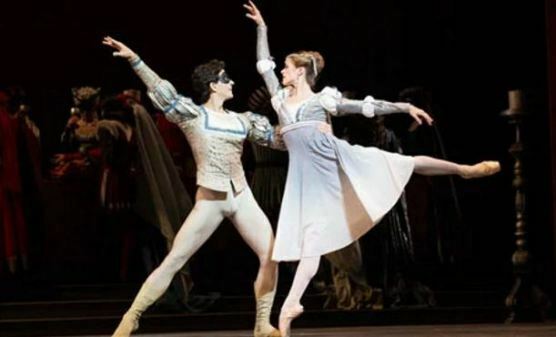
Good Shakespeare
Robert Hamilton Ball, author of the first book on silent Shakespeare, Shakespeare on Silent Film (1968), despite his enthusiasm for the subject, makes this dismissive comment on the genre:
Silent Shakespeare film could not be art, a new art. The aesthetic problem is how to make good film which is good Shakespeare. It could not be good Shakespeare because too much was missing.
I would say that the aesthetic problem was never how to make a good film that was good Shakespeare; it was instead to make a good film using Shakespeare. Ball’s idea of ‘good Shakespeare’ lies beyond what the silent cinema, with the technology that it had at its command, could produce. What is necessary is to judge such films for what they are, not for what they are not. Amleto was a silent Shakespeare film, one of an identifiable genre of silent Shakespeare films, with its own peculiar but particular aesthetic, its own special significance. These films were not great art, and Amleto is not by any measure a great film, but there is art there, the simple measure of which is that one is rewarded by seeing the best of them. And Amleto is among the best of them.
The simplest analogy is with ballet. No one gets up in the middle of, say, Prokofiev’s Romeo and Juliet, and complains that they can’t hear the words. Silent Shakespeare films have their own means of expression, their own special corner in the many kinds of Shakespearean performance. And it is in that spirit that I hope that you will enjoy Amleto.
Links:
- Amleto is screening at 18:00 on Thursday 23 June at the Bristol Watershed. There will be an introduction from me, piano accompaniment by the peerless Neil Brand and a Q&A afterwards. Further details here
- There is an excellent discussion of Amleto in Judith Buchanan’s Shakespeare on Silent Film: An Excellent Dumb Discourse (2009)
- The European Film Star Postcards blog has several postcards of Ruggeri Ruggeri and Amleto
- The British Film Institute’s new DVD/Blu-Ray, Play On! Shakespeare in Silent Film, will be published in July 2016
- The full text of my 2004 talk on Amleto (which includes a complete set of the intertitles in French and English translation) is on this site, here: https://lukemckernan.com/wp-content/uploads/amleto.pdf